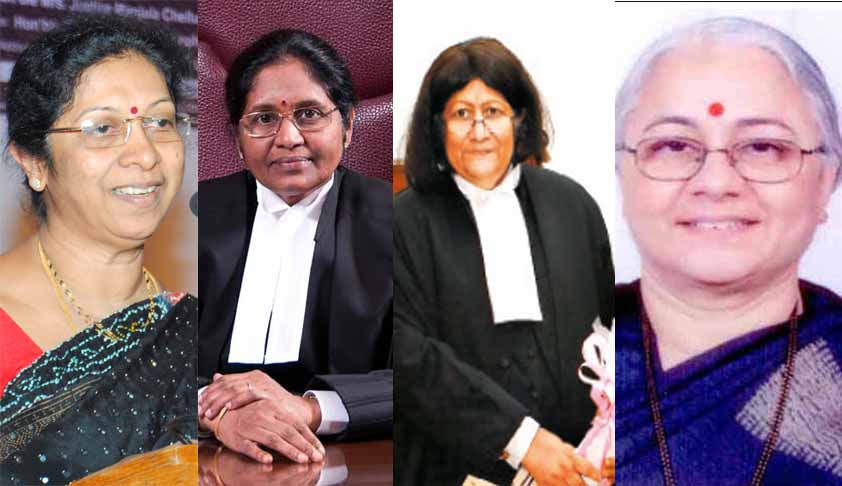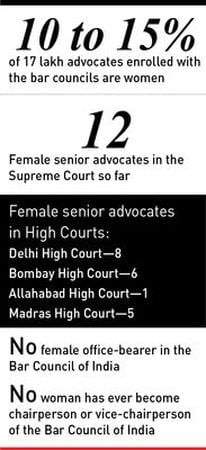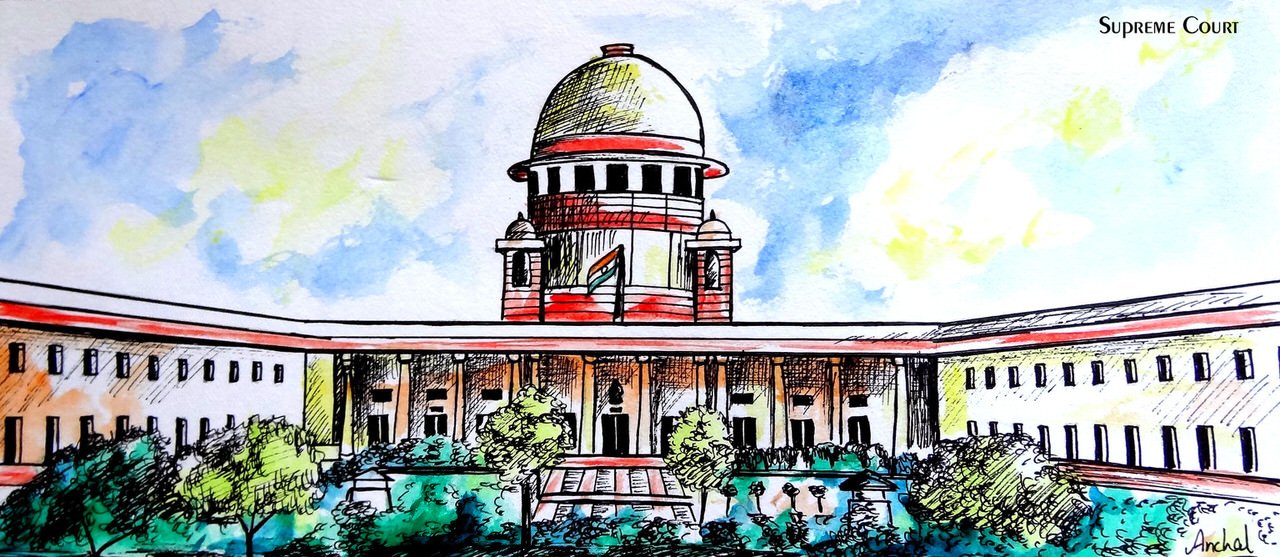A step has been climbed towards gender equality in our courts as four of the major High Courts of India are now to be headed by female chief justices: Justice Indira Banerjee (Madras High Court), Justice Rohini (Delhi High Court), Justice Manjula Chellur (Bombay High Court) and Justice Nishita Nirmal Mhatre (Acting Chief Justice of Calcutta High Court).

Live Law: Four Female Chiefs of HC
High Courts
This is the first time that four High Courts will be heralded by four women, a reflection of the glaring gender disparity prevalent in what is known as the All Boys’ Club that is our justice system. However, even this apparent shove against the glass ceiling must be inserted into context to unmask the incongruous ratios: Among the 652 High Court judges in 24 High Courts, there are only 71 women judges (with two new additions in April 2017).
Further, Justice Leila Seth who was the first female Chief Justice of a High Court, was designated so only in the year 1991. The oldest High Court in India is The Calcutta High Court, which came into existence on 1st July, 1862 and it took more than 5 decades for its first female Chief Justice to be appointed (Justice Manjula Chellur on August 5th, 2014). The oldest High Court of our country also has a poorer women-to-men-judge ratio of 4 to 35. The Delhi High Court has been headed by Justice G. Rohini since April 13, 2014 which makes 9 female judges and 35 male judges. With the elevation of Rekha Palli and Pratibha M Singh in April 2017, there will be 11 women judges in the High Court, a welcome move to bridge the gender disparity against a current sitting strength of 35. It is now on par with the Bombay High Court, which previously had the highest number of women judges, 11, against 61 male judges. The Madras High Court has 53 male judges whereas the number of women judges is a measly 6 including the Chief Justice.
But even these proportions are grossly inadequate, women occupy the courts in quarter to less than quarter of the total filled seats. According to the latest data available (as on 29.3.2017), only 10.86 per cent of judges in the higher judiciary are women.
Supreme Court
Only 6 women judges have made it to the Supreme Court since independence. The Supreme Court came into existence on 28th January, 1950 and in the first 39 years of the Supreme Court, no woman was appointed to it. In 1989, Justice Fathima Beevi was appointed as the first woman judge of the Supreme Court and Justice R. Banumati is the only woman judge in the Supreme Court, against the working strength of 28 and sanctioned strength of 31 (who is due to retire on 19th July 2020). Justice Fathima Beevi was also the first of Muslim women to be appointed to the apex institution. The court has never had more than 2 women judges at any one given instance.
Also Read: Gender Disparity At The Supreme Court Of India
Need for reform
The justice system has become trite for All Boys’ Club with restricted entry and limited gender passes. We have also never had a transgender cloaked in judicial authority, a toll of the bell for the need to have a more inclusive, gender representative court system. There is an institutionalized gender bias inherent in the bench which, when viewed through a gendered lens, unveils the male dominated courts. There is no dearth of female lawyers which shows that the number of women entering the legal profession is a substantial number, but the bar is also at level (even though women were only allowed to participate in 1922).
But the number of females who pass through the cracks in the walls of the courts to occupy the levels as judges and chiefs is a mere handful. Where, then, is the lacuna? Only 12 women have been designated senior counsels by the Supreme Court so far. Only 8 women have got that distinction in the Delhi High Court and 6 in the Bombay High Court (November, 2016). India still hasn’t had a female attorney general and solicitor general. This data shows us that women need an equal dealing in not only the bench, but also the bar.
The problem lies not only at appointment of judges, then, but of appointment of women as a whole to the top rungs of the profession. Whether this problem lies at law schools, women willing to enroll at the bar and become lawyers, or at women as judges, the labyrinth needs to be identified so that the issues may be addressed.

The Week
The current Chief Justice of India, Justice J.S. Khehar admitted the need appointing more women into the courts. The Supreme Court Women Lawyers’ Association (SCWLA) pointed out, “that keeping the Article 14 (right to equality) and Article 15(3) of the Constitution, India is a signatory to Conventions on Elimination of Discrimination Against Women (CEDAW), 1979, which envisaged removal of obstacles of women’s public participation in all spheres of public and private lives“.
Judges are appointed through the collegium system in India. The Supreme Court collegium is spearheaded by the Chief Justice of India and comprises four other senior most judges of the court. A High Court collegium is led by its Chief Justice and four other senior most judges of that court. These appointments are made through the President as under Articles 124(2) and 217 of the Constitution of India. The Three Judges’ Cases ushered in the era of the collegium system but the procedure is a closed-door affair with little scope for transparency. The National Judicial Appointments Commission was also struck down by a 5 judge bench of the apex court. Currently, appointments are made without any new Memorandum of Procedure guiding eligibility and appointments, as the government was asked to draft along with the Chief Justice of India way back in 2015. It is thus only through this system that the demands for a fair representation of women into the judiciary can be paved.
It is ironic that the strongest symbol of justice in our country is a blindfolded woman (Lady Justice) with scales of balance in her hand and often, a sword. She represents everything that our legal system stands to be: fair in her dealings, just in her pronouncements, blind to discriminatory elements in her administration, and ruthless as a guardian of the law. She represents the absence of bias and the goddess of equity.
Yet, the women in our judiciary are barely equal to their counterparts. The Courts of India are the harbingers of justice, and in a patriarchal society, they must be inclusive of the genders in order to ameliorate this patriarchy and manipulate its steadfast institutions to stare through the cracks and demand equality of representation at the Bench. It’s time to bring gender justice to the justice system to make it truly reflective of an unbiased legal order.
About the author(s)
Shilpa Prasad is a law student who loves books, poetry and her guitar.




